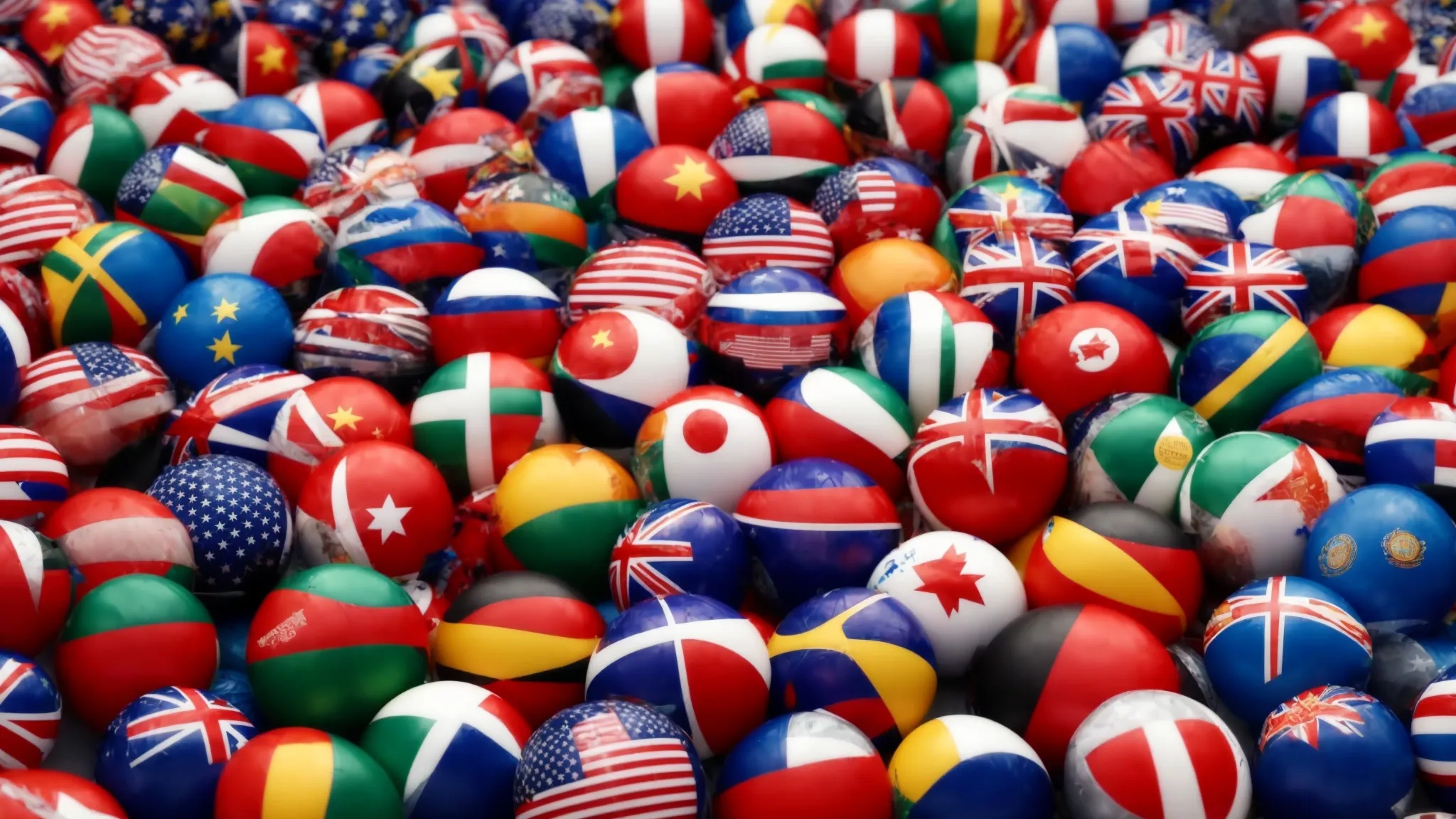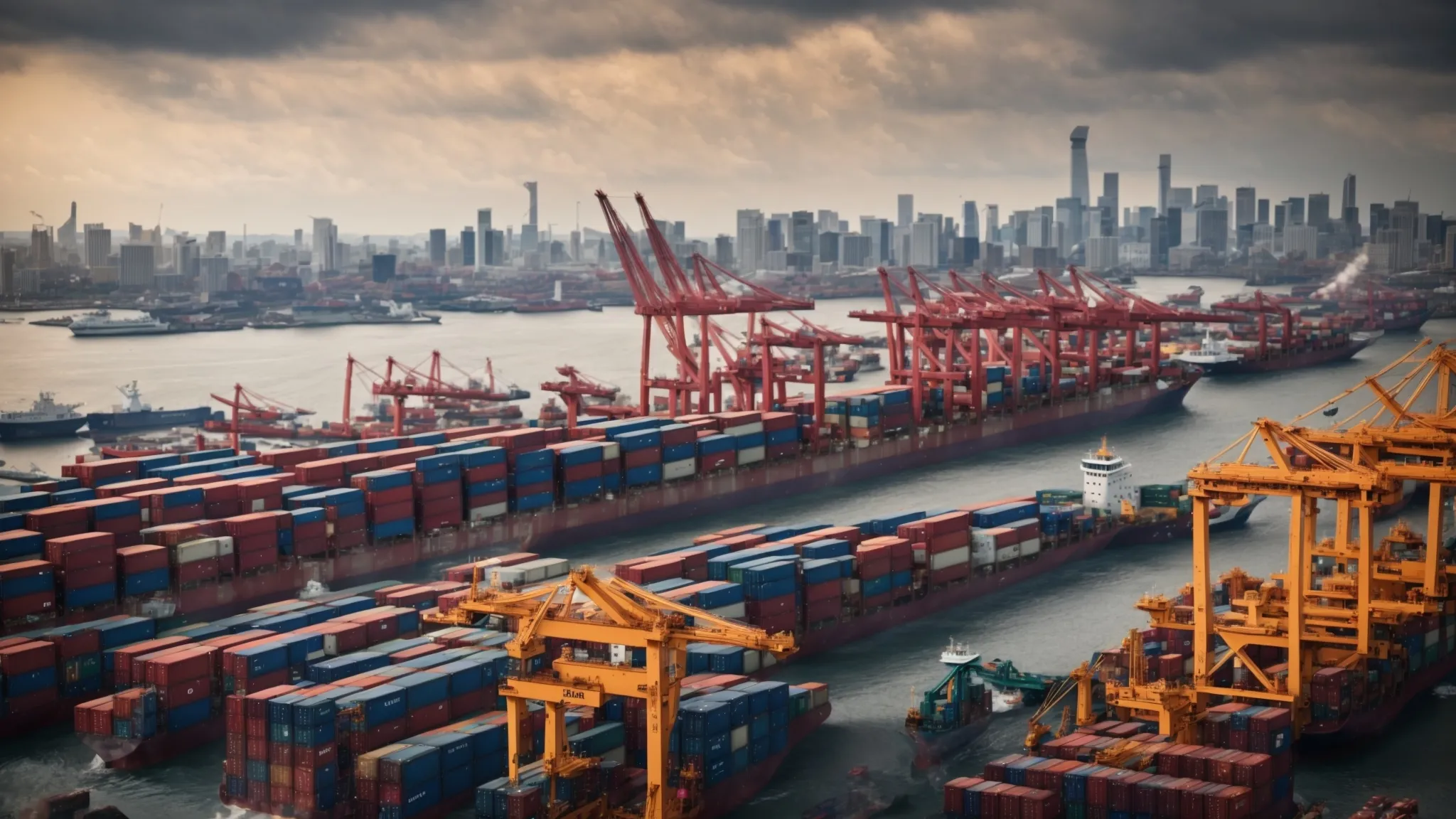Understanding the Agreement on Trade-Related Investment Measures (TRIMs)
Navigating the complexities of global commerce, the Agreement on Trade-Related Investment Measures (TRIMs) stands as a pivotal treaty within the Uruguay Round framework, shaping the conduit through which international trade and foreign direct investment flow.
At its core, TRIMs serves as a safeguard, ensuring that investment policies of member countries do not create trade barriers or disrupt the delicate balance of international market dynamics.
It helps level the playing field, providing a set of rules that govern the intersection of trade policies and investment choices and thus fostering economic collaboration on a global scale.
With nations striving to attract overseas capital to bolster their economies yet maintain fair market access, TRIMs outlines the do’s and don’ts that preserve both economic growth and equitable trade.
In this article, we unravel the multiple layers of TRIMs to appreciate its role in today’s interconnected economic landscape.
Key Takeaways
Introduction to TRIMs and Its Importance

The Agreement on Trade-Related Investment Measures, known succinctly as TRIMs, stands as a critical component of the general agreement on tariffs and trade, shaping the foundation upon which international trade is constructed and executed.
This treaty frames the legal matrix for foreign direct investment and the conditions that govern investment-related activities, ensuring that regulations instituted by member nations are in line with the principle of national treatment.
By delving into a brief overview of TRIMs, stakeholders come to comprehend the treaty’s fundamental mechanisms—clearly delineating permissible from the prohibited practices.
Acknowledging the importance of TRIMs unlocks an understanding of its pivotal role in not only safeguarding fair competition but also in bolstering the seamless integration of economies, thus driving economic growth and development across borders through foreign direct investment.
As we examine the thoughtful orchestration behind general agreement on tariffs and trade, we unveil how it acts as an underpinning force that encourages nations to navigate the complex domains of international trade with increased clarity, collaboration, and shared prosperity.
A Brief Overview of Trade-Related Investment Measures
Conceived during the Uruguay Round of negotiations and inaugurated by the Marrakesh Agreement in 1994, the Agreement on Trade-Related Investment Measures (TRIMs) exists as one of the multilateral accords overseen by the World Trade Organization (WTO). TRIMs primarily addresses the regulatory strategies that countries may employ concerning foreign direct investment investors’ operations within their jurisdictions.
The agreement is astutely designed to eliminate trade barriers that impede market access and distort competition by mandating that WTO members avoid applying measures that contradict the key provisions of the General Agreement on Tariffs and Trade (GATT). TRIMs thus plays an instrumental role in ensuring that international investment moves in concert with the principles of transparency, governance, and equitable economic policy.
Why TRIMs Are Pivotal in International Trade
The global economic landscape is one defined by its dynamism, where trade agreements like TRIMs serve as the agreement on trade related investment measures for steady navigation. By setting boundaries for investment measures, TRIMs enhances market stability and provides a level playing field for domestic and foreign investors, encouraging fair competition and fostering environments ripe for investment.
Moreover, TRIMs stands as a testament to the collective resolve of nations to uphold the values of international general agreement on tariffs and trade, acting as a cornerstone for the world trade organization commercial exchange. Its significance is magnified when considering its role in eradicating preferences and prejudices that may obstruct trade, thus supporting the substantial growth of developing economies around the world.
The Role of TRIMs in Fostering Global Economic Integration
In its essence, the Agreement on Trade-Related Investment Measures serves as a fulcrum for the advancement of global economic integration, by harmonizing investment regulations among trading partners. By fostering an even playing field, TRIMs minimizes the friction that often arises from varying national policies and allows for a more fluid movement of foreign direct investment across international boundaries.
The role of TRIMs in fostering global economic integration is further underscored by its impact on the ease of doing business; it streamlines the process of trade and investment, thereby catalyzing the interconnectivity of global markets. Nations can partake in a broader economic dialogue, propelled by the shared objective of wealth and employment generation, thanks to the general agreement on tariffs and trade.
Accelerates the integration of emerging markets into the global trade system.
Core Objectives of the TRIMs Agreement

The core objectives of the Agreement on Trade-Related Investment Measures reside in the confluence of enhanced transparency, removal of obstructive trade and investment barriers, and the creation of an equitable arena for both domestic enterprises and foreign investors, according to the world trade organization and foreign direct investment.
As a keystone directive under the auspices of the World Trade Organization, TRIMs aims to illuminate the path to international investment procedures, ensuring member countries reveal their investment laws and practices with utmost clarity and foreign direct investment.
This strategic move towards transparency is complemented by the initiative to dismantle the hurdles that curtail the flow of foreign direct investment, thereby enabling a more prolific and inclusive investment landscape with general agreement on tariffs and trade.
In turn, by advocating for uniform rules that apply indistinctly to all, TRIMs champions a balanced environment where no market participant enjoys an undue advantage over another, fostering an atmosphere of fair play and mutual economic advancement.
Enhancing Transparency in International Investment
Diligence in securing transparency stands at the forefront of the general agreement on tariffs and trade agenda, creating a framework for international investment that is as clear as it is navigable. Emphasizing the exchange of information, TRIMs necessitates that member states openly impart foreign direct investment regulations, fostering an environment of trust where foreign investors can act with certainty and informed confidence.
Reflective of this commitment to transparency, TRIMs serves to illuminate the otherwise opaque intricacies of agreement on foreign direct investment measures. It establishes a baseline of accessible and understandable rules that mitigate concerns of ambiguity and subsequent investment hesitancy, thereby paving the way for robust cross-border economic cooperation.
Reducing Trade Barriers and Investment Restrictions
The TRIMs Agreement stands as a bulwark against antiquated and protectionist inclinations, specifically targeting the dismantlement of obstructive trade barriers and investment restrictions. Its provisions are aimed squarely at enabling foreign investors and domestic firms to compete on equal footing in the general agreement on tariffs and trade, thereby nullifying unfair advantages and opening up markets to a diverse range of participants.
In tackling the constraints that hamstring trade and investment, the Agreement effectively streamlines the conditions under which entities operate internationally. It is this commitment to reducing disparity and hindrance in the flow of trade that not only enriches the economic tapestry but also fortifies the underlying structures of free and fair international commerce.
Fostering a Level Playing Field for Domestic and Foreign Investors
Within the ambit of international trade, the TRIMs Agreement elevates the prospects of both local firms and foreign investors by ensuring that neither is given preferential treatment over the other: a commitment to fair play is enshrined at its core. The dismantling of trade biases and the establishment of uniform regulations facilitate an environment where all players have the opportunity to thrive on merit, innovation, and strategic prowess.
Transcending borders, this general agreement on tariffs and trade reinforces the World Trade Organization’s mission to nurture sustainable economic growth and development through inclusive trade. National economies are thus invigorated by the fresh competitive spirit that the Agreement fosters, unlocking potential in sectors previously hindered by asymmetric investment conditions and restrictive practices.
Key Provisions Under the TRIMs Agreement

The TRIMs Agreement serves as a cornerstone of international trade by establishing clear rules that govern investment policy.
At the heart of this treaty lie several key provisions designed to streamline global commerce and investment.
These include a comprehensive list of prohibited investment measures to prevent trade distortions and restrictions.
Yet, the agreement also acknowledges the complex realities of international economics by permitting certain exceptions and providing flexibilities for nations under specific conditions.
Crucially, the agreement incorporates an effective mechanism for dispute resolution, thereby ensuring that any disagreements arising from investment measures can be addressed systematically and fairly.
As we navigate the intricate facets of TRIMs, it is vital to recognize how these provisions work in tandem to maintain the integrity of international trade dynamics and safeguard the interests of all nations engaged in the global economy.
The List of Prohibited Investment Measures
The TRIMs Agreement delineates a clear set of investment measures that are prohibited due to their potential to distort trade and foreign direct investment flows. These measures often take the form of stipulations mandating local content or trade-balancing requirements, which unfairly benefit domestic industries at the expense of foreign counterparts.
One of the primary goals of these prohibitions is to ensure that investments are based on economic considerations, rather than being influenced by protectionist policies. Consequently, TRIMs seeks to prevent member countries from imposing conditions that require the purchase or use of domestic over imported goods, or that impose restrictions on the quantity of imports or exports in relation to the volume of rhinestone production.
Exceptions and Flexibilities Within the Agreement
Even as the TRIMs Agreement sets a universal standard for investment measures, it acknowledges the unique economic landscapes of its members through carefully calibrated exceptions and flexibilities. These provisions accommodate the specific needs and development stages of countries, particularly those classified as least developed or going through transitional economies.
Such variances are vital as they grant nations the capacity to gradually align with international standards without abruptly dislocating their domestic economies. In this sense, the TRIMs Agreement embraces a level of pragmatism, allowing temporary deviations to support the progressive integration into the global trade framework.
The Mechanism for Dispute Resolution
Effective dispute resolution is integral to the operability of the TRIMs Agreement, providing a structured approach to rectify disagreements between member states. Through WTO’s sophisticated dispute settlement system, member countries are empowered to engage in consultations and negotiations to resolve issues arising from alleged breaches of the agreement.
When bilateral consultations fail to yield a resolution, the WTO’s Dispute Settlement Body can establish a panel to examine the case, and if necessary, the appellate body reviews the panel’s findings. This multi-tiered approach ensures impartiality and comprehensive examination, a crucial step for maintaining the agreement’s integrity and efficiency:
Impact of TRIMs on Global Trade and Investment

The Agreement on Trade-Related Investment Measures (TRIMs) plays a pivotal role in shaping the contours of global trade and investment.
Its impact on member countries and their economies is profound, with ripples felt across varying sectors and development stages.
The intricacies of TRIMs extend to case-by-case scenarios that offer rich insights into its real-world implications—these are illuminated through in-depth case studies.
In observing the global implementation of TRIMs, one notes the emergence of positive outcomes, heralding economic growth and the removal of trade bottlenecks.
Nonetheless, the agreement faces its share of challenges and criticisms, raising debates about its effectiveness and adaptability to the ever-changing landscape of international commerce.
The complex interplay of these factors forms a compelling narrative on the influence of TRIMs in today’s integrated markets.
Case Studies Illustrating the Effects of TRIMs
An in-depth examination of China’s automotive industry reveals the significant influence of TRIMs on its market dynamics. The agreement prompted China to modify certain local content requirements, fostering a more receptive environment for foreign direct investment and setting the stage for the nation’s unprecedented growth in automobile production and export capabilities.
In contrast, a study of India’s pharmaceutical sector showcases TRIMs affecting production and market access. India adapted its investment policies in lieu of TRIMs, providing foreign investors with increased opportunities while simultaneously reinforcing the domestic industry’s capacity to innovate and expand, further integrating Indian pharmaceuticals into the global economy.
Positive Outcomes of Implementing TRIMs
The implementation of TRIMs has been consequential in harmonizing investment rules across different nations, thus catalyzing a surge in foreign direct investment. This rise in investment has had a multiplier effect, spurring innovation and economic diversification in countries that were previously dependent on a narrow range of exports or natural resources.
Moreover, TRIMs’ emphasis on fairness and national treatment has been instrumental in dissolving long-standing trade barriers, offering smaller economies, like Sierra Leone and Moldova, the opportunity to entice and secure global capital. This has not only leveled the playing field but has also encouraged domestic industries to elevate their standards, align with international best practices, and engage more competitively on the world stage.
Challenges and Criticisms Faced by the Agreement
Amidst its well-intentioned objectives, the TRIMs Agreement has faced scrutiny over its real-world efficacy, particularly concerning its impact on domestic policy autonomy. Critics argue that the stringent compliance requirements often curtail a government’s ability to enact bespoke industrial policies tailored to specific national socioeconomic needs, constraining the policy space necessary for nations to nurture their own paths to development.
Furthermore, detractors highlight the challenges faced by developing countries in adhering to TRIMs stipulations, noting that such uniform standards may not account for the varying stages of economic maturity. This has sparked concerns over whether the agreement inadvertently favors more developed economies with established infrastructures, thus perpetuating inequalities within the spectrum of international trade and investment.
The Process of Compliance With TRIMs

The Agreement on Trade-Related Investment Measures, while foundational to the facilitation of free and fair international trade, demands rigorous adherence from its signatories to uphold its guiding principles.
Within this framework, nations are expected to undertake a series of steps to align their investment policies with the stringent requirements of TRIMs.
This involves a proactive process of policy adjustment, legislative amendment, and robust regulatory oversight to integrate seamlessly into the established global economic order.
Adherence stretch beyond the initial alignment; they extend to include ongoing monitoring and enforcement by the World Trade Organization, which is pivotal in maintaining the agreement’s integrity.
As countries strive for compliance, recent challenges have emerged, prompting the WTO to address these issues through its structured mechanisms for dispute resolution.
This dialogue between member states and the governing body highlights the dynamic nature of compliance, showcasing the evolving strategies employed to navigate the complex landscape of international trade and investment, specifically within the world trade organization.
Steps Countries Must Take to Align With TRIMs
Nations embarking on the journey to comply with the World Trade Organization must first conduct a comprehensive review of their existing investment policies and regulations. This audit enables a thorough comparison between current practices and the standards set forth by the agreement, identifying areas that require reform or elimination to meet the international benchmarks.
Following the initial assessment, governments must engage in the meticulous reformation of their legal frameworks. Updating laws to disallow trade-distorting investment measures and implementing new regulations in line with TRIMs stipulations is crucial for fostering a trade environment that adheres to WTO principles:
Monitoring and Enforcement of Compliance by WTO
The World Trade Organization (WTO) plays an indispensable role in ensuring member countries’ adherence to the TRIMs agreement by conducting regular surveillance of national policies and practices. This oversight function is critical in upholding the latticework of international trade and investment norms that TRIMs embodies.
In cases where discrepancies or instances of non-compliance are detected, the WTO possesses the authority to engage the disputing parties in dialogue, aiming to facilitate a resolution that brings transgressing policies in line with TRIMs standards. Such engagement underscores the organization’s commitment to fostering consistent and balanced trade relations among its diverse membership.
Recent Compliance Issues and How They Were Addressed
In recent years, certain WTO members have grappled with adhering to the nuanced requirements of TRIMs. Notably, disputes arose when policies within some developing countries inadvertently contravened TRIMs provisions, prompting intervention from the World Trade Organization. Resolutions were sought through structured consultations where member states were guided towards policy adjustments that aligned with TRIMs while considering the countries’ developmental context.
Another compliance challenge emerged as technological advancements and digital trade introduced complexities not entirely anticipated by the framework of the World Trade Organization. The WTO addressed these issues by engaging experts and stakeholders in dialogue, resulting in nuanced interpretations and, where necessary, updates to the agreement. This collaborative approach ensured that TRIMs could adapt to the evolving landscape of international trade, maintaining its relevance and applicability in the modern economic milieu.
Future of the TRIMs Agreement in Changing Global Economy

As the global economy continues to evolve, the agreement known as TRIMs faces the imperative of adapting to the changing landscape of trade and investment.
The dynamism of international markets, fueled by innovation and the burgeoning influence of emerging economies, necessitates a reevaluation of the World Trade Organization’s current provisions to ensure its effectiveness and relevance.
With consideration for updates and reforms, the international community is poised to redefine the conditions under which trading occurs, while the influential role of emerging economies promises to inject fresh perspectives into the future discourse of TRIMs.
This juncture holds the potential to reforge trade-related investment measures for a new era of global economic interplay, reflecting both the demands of contemporary commerce and the diverse interests of participating nations.
The Evolving Nature of Trade and Investment Measures
As international commerce forges ahead, the nature and scope of trade and investment measures are in a state of perpetual progression. Contemporary trade policies must address the multifaceted demands of digital economies, sustainability issues, and the equitable distribution of economic benefits.
TRIMs must evolve to encapsulate the intricacies of modern trade instruments, like e-commerce and service-oriented investments, while reinforcing commitments to labor and environmental standards. The amendment of the agreement will be instrumental in endorsing practices that align with the holistic vision of inclusive and sustainable global trade development.
Updates and Reforms Under Consideration for TRIMs
As international dialogues progress, the World Trade Organization contemplates significant revisions to the Agreement on Trade-Related Investment Measures (TRIMs) that reflect advancements in global trade practices. Key areas under consideration include the incorporation of guidelines that better accommodate the rise of digital economies and the increasing significance of service sectors within global markets.
Simultaneously, discussions are underway to infuse TRIMs with provisions promoting responsible business conduct, emphasizing environmental stewardship, and social responsibility among investors. These proposed reforms aim to align the agreement with contemporary expectations of sustainability and ethical governance in the increasingly interconnected global economy. Rhinestones, buttons, leather, sequin, lace, braid, clothing, sewing, ribbon, and embroidery are essential elements within the garment industry.
The Role of Emerging Economies in Shaping the Future of TRIMs
Emerging economies, with their rapid growth and increasing clout in global markets, are poised to assert considerable influence on the evolution of TRIMs. As these countries become more integral to the architecture of international trade, their perspectives and needs are likely to spawn significant amendments to the agreement, ensuring that TRIMs remains responsive to a broader range of developmental strategies.
The ascension of nations such as India and South Africa within the global economic dialogue brings fresh voices to the debate on investment and trade. Their unique experiences with TRIMs will contribute to shaping an agreement that is not only equitable but also adaptive to the nuanced realities of diverse economic environments.
Conclusion
Understanding the Agreement on Trade-Related Investment Measures (TRIMs) is essential for ensuring a level playing field in the realm of international trade and investment.
The treaty promotes transparency, governance, and non-discriminatory practices, facilitating economic growth and integration across global markets.
By setting forth clear regulations, TRIMs helps break down trade barriers and fosters fair competition, benefiting domestic and foreign investors alike.
As the global economy evolves, TRIMs’ adaptability remains crucial in balancing the diverse interests of established and emerging economies.


